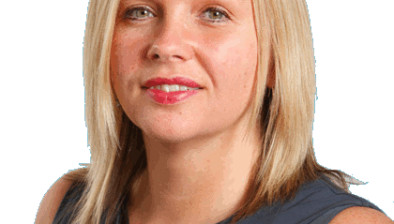Blog: Scottish high street suffering – then let’s rethink the plan….

The Scottish Retail Consortium recently reported that almost one in ten retail premises in Scotland now lies empty. Retail footfall in Scotland fell in July and there are a dwindling number of months in any year where any growth at all is evident.
Perhaps unexpectedly, shopping centres are faring worst of all. While the fall seen in Scottish high streets (-0.6% in July) is slightly less arresting it carries on a trend that has been seen over many years. Significantly, footfall in retail parks saw a healthy increase in the same period.
While this is just another set of statistics to add to all those other retail statistics, there is an ongoing media narrative applying to the retail sector. The story is one of continuously falling footfalls, failing retail businesses resulting from punitive business rates and the loss of trade due to the corrosive effect of the Internet on physical stores.
To try and step outside of the current malaise, I recently read an article about two of the great American retail successes of the twentieth century – Kroger and Walgreens.
Kroger (perhaps most easily compared to a Tesco or a Morrison’s) grew to become a great company, sustaining its successes over decades. But, it was not always a great company. Its moment of transformation saw it move from small traditional grocery stores to huge superstores of the kind seen across the USA (and most of the western world) today. That was in response to a clear change in the lives of the customers that Kroger served.
Walgreens (perhaps most like Boots or Superdrug) also came to be a great company by achieving a similar moment of transformation. For them, it was to realise that convenience for customers and profit per customer visit (rather than profit per store) was key to its success. Walgreens spawned a dense population of ‘convenience’ stores on every city street corner which brought comparisons with the ever-presence of Starbucks in Seattle.
To become great both companies confronted the brutal facts of their then current circumstances. For Kroger, it was the need to transform 100% of their store portfolio from small stores to huge superstores. For Walgreens, it was a need to find the most convenient store locations. Both formulated a simple new concept of what their retail business should do and be – always having regard to what fired up their business and their people and what their customer base really wanted.
Applying the lessons learned by these companies in the present circumstances, it may be time to stop analysing what isn’t working and instead consider what is working. Food courts and cinemas were once add-ons to top up the footfall or extend visit times to shopping centres. Perhaps the pendulum has now swung fully the other way, such that retail will be secondary to the central concern of creating a leisure destination often complimented by a selection of retail. And perhaps the nature of the retail unit lease will change too, moving away from long durations to a ‘pop-up’ culture of the kind that is bringing occupiers such as prestige car brands into the shopping centre environment.
The continuing growth of out of town retail parks perhaps reflects the simple fact that they more often present a product selection or experience which cannot be replicated online.
Somewhere out there is a simple, unifying concept that landlords, retailers and leisure operators will harness and adapt to make their businesses great businesses. In short, the latest statistics may be telling us what we already know, and the real story is to work out who will be the retail and leisure heroes of the twenty-first century, praised for having transformed their sector during the gloomy old days of the early 2000s.










